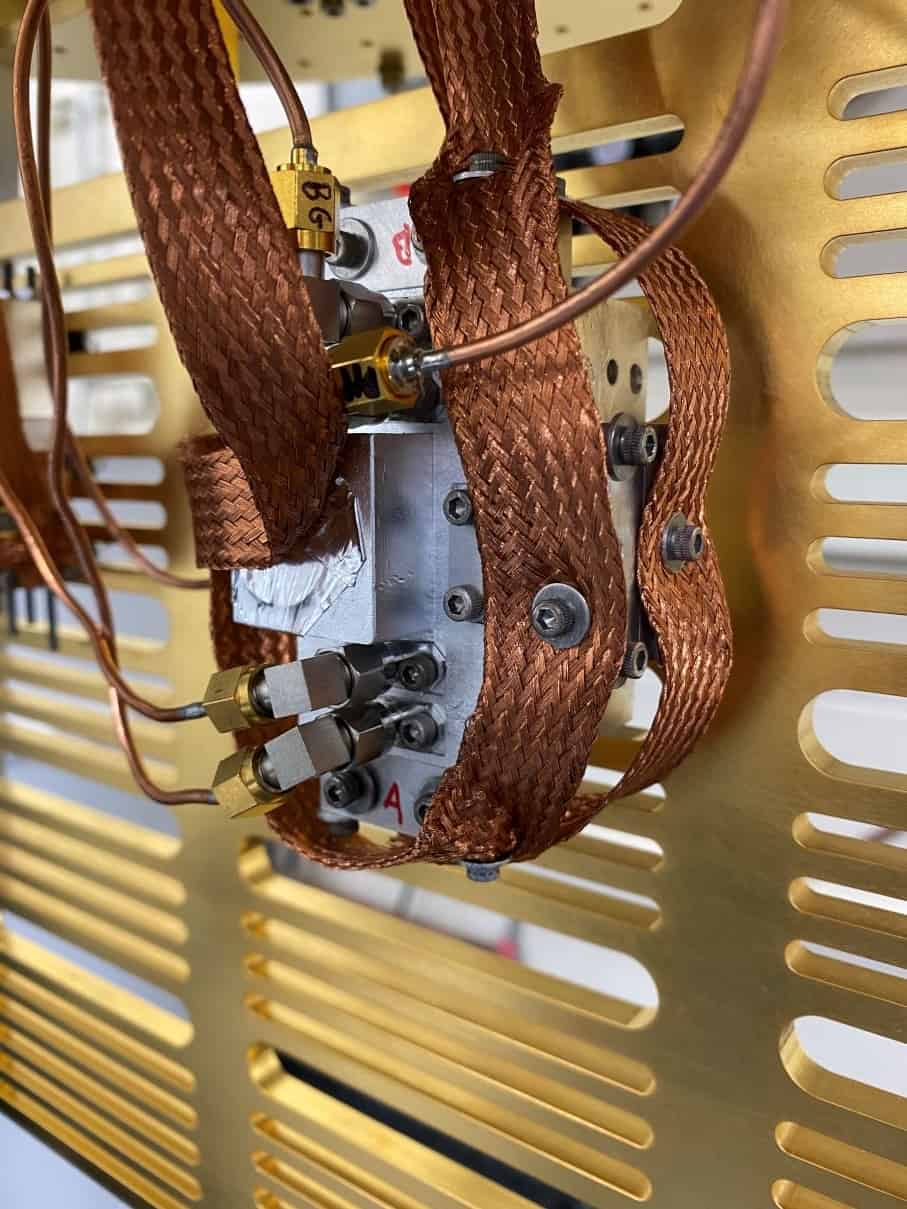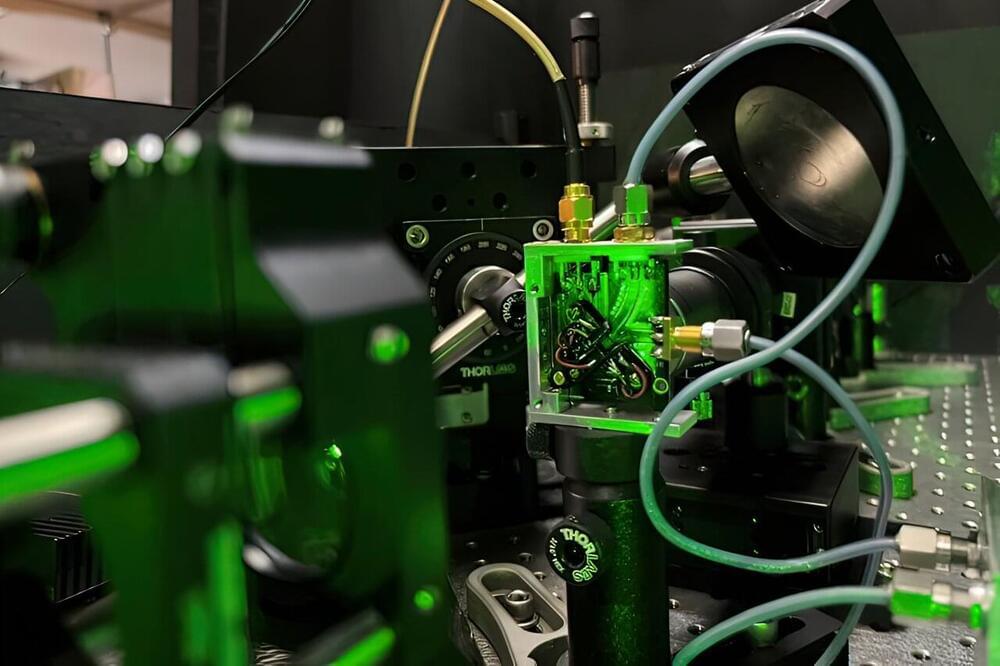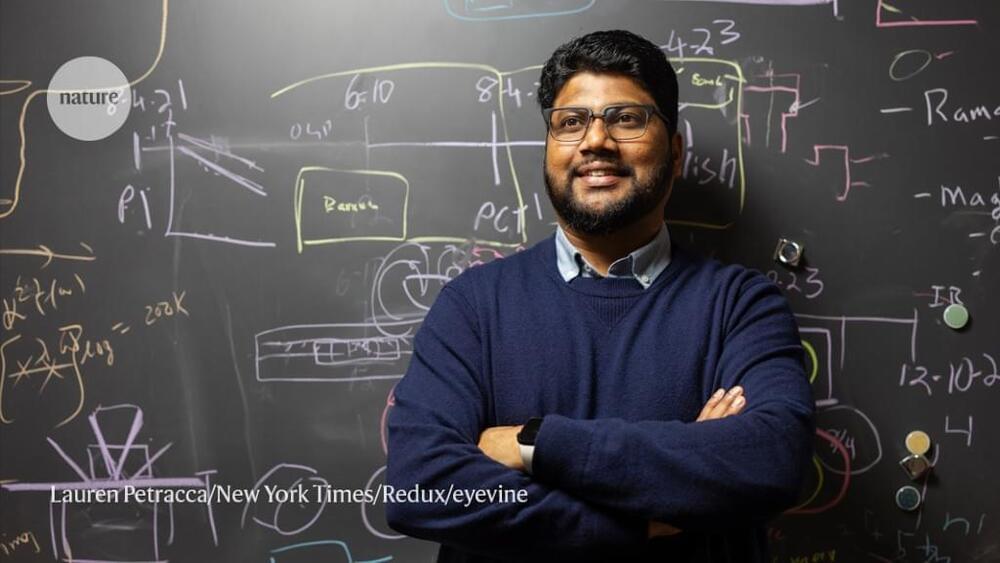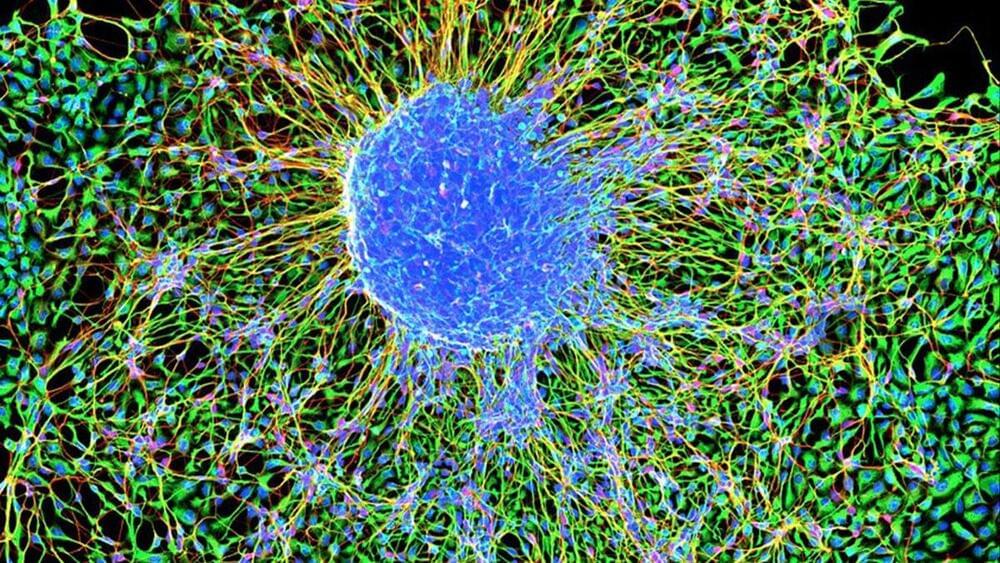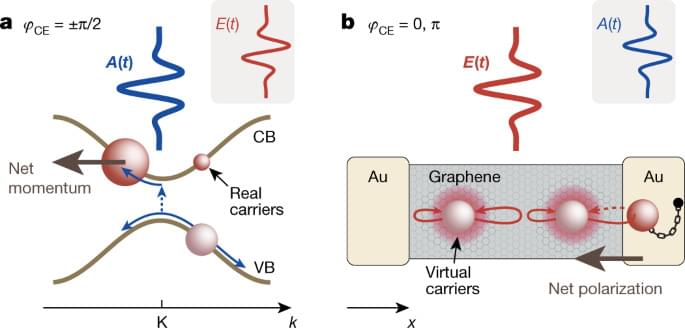Archive for the ‘computing’ category: Page 156
Sep 7, 2023
Researchers develop a protocol to extend the life of quantum coherence
Posted by Shailesh Prasad in categories: bioengineering, computing, quantum physics
For years, researchers have tried various ways to coax quantum bits—or qubits, the basic building blocks of quantum computers—to remain in their quantum state for ever-longer times, a key step in creating devices like quantum sensors, gyroscopes, and memories.
A team of physicists from MIT have taken an important step forward in that quest, and to do it, they borrowed a concept from an unlikely source—noise-cancelling headphones.
Led by Ju Li, the Battelle Energy Alliance Professor in Nuclear Engineering and professor of materials science and engineering, and Paola Cappellaro, the Ford Professor of Engineering in the Department of Nuclear Science and Engineering and Research Laboratory of Electronics, and a professor of physics, the team described a method to achieve a 20-fold increase in the coherence times for nuclear-spin qubits.
Sep 7, 2023
“Reality” is constructed by your brain. Here’s what that means, and why it matters
Posted by Quinn Sena in categories: computing, cosmology, neuroscience, space travel
Year 2020 The ecology of the human brain is so complex that it even seems like it’s own not only story within itself but also could be like a self perpetuating universe of all sorts. Even neurons resemble the universe. What I believe is that the human brain is actually like an infinite spaceship that has infinite potential not only as a computational source but as sentience that is actual sentient in itself not just a story but kinda the god in the machine like a black box of limitless potential not only a computer but much more possibly a universe that guides us and shapes us. Even when we see the ecology of the mind we see so many stories and realities able to create its own multiverse… More.
What the science of visual illusions can teach us about our polarized world.
Sep 7, 2023
Why a blockbuster superconductivity claim met a wall of scepticism
Posted by Gemechu Taye in categories: computing, quantum physics
Dias didn’t disappoint. He and his colleagues had created a material — lutetium mixed with nitrogen and hydrogen, or LuNH — that was a superconductor at room temperature, he announced.
That claim, which the scientists published in Nature the next day1, would have been historic — if true. Superconductors conduct electricity with zero resistance, meaning that no energy is lost as heat. But they usually work only at very low temperatures, well below −100 °C, so need expensive refrigeration. This limits their use to niche applications, such as magnetic resonance imaging scans and quantum computing. A superconducting material that needs no cooling could potentially transform electricity generation and transmission, transportation and a slew of other applications.
Dias’s claim was remarkable not only for the material’s balmy operating temperature of 21 °C (294 K), but also because it required comparatively modest pressures. Other teams working with hydrogen compounds, called hydrides, have observed superconductivity at high temperatures, but had to squeeze their samples to hundreds of gigapascals (GPa) — millions of times more than atmospheric pressure. Dias, by contrast, said that his hydride needed just 1 GPa (10,000 times atmospheric pressure): still impractical for real-world applications, but a striking advance. A patent application for LuNH, released in April, goes further, claiming superconductivity at room temperature and pressure.
Sep 7, 2023
How Huawei’s new chip changes the US-China tech landscape
Posted by Gemechu Taye in categories: computing, economics, mobile phones
The recent unveiling of Huawei Technologies’ Mate 60 Pro smartphone has sparked a whirlwind of chatter across political, economic, and technological spectrums. The device, a showcase for China’s growing prowess in semiconductor technology, has left industry insiders debating whether it signifies a significant milestone in the US-China technology cold war.
Ever since Huawei was blacklisted by the US in 2020, denying it access to state-of-the-art American chip technologies, the tech giant has been cloaked in secrecy. In this mysterious atmosphere, the launch of Mate 60 Pro has become the subject of intense scrutiny, primarily due to the chip powering it—dubbed Kirin 9000s.
Sep 6, 2023
Scientists reveal the hidden math that governs how neurons cluster in the brain
Posted by Dan Breeden in categories: computing, mathematics, neuroscience
The density of neurons in the brain is governed by a fundamental mathematical function, new research finds.
The discovery, which holds true across a variety of mammals, could help researchers make better computer models of the brain in the future.
Sep 6, 2023
Light-field control of real and virtual charge carriers
Posted by Quinn Sena in categories: computing, materials
Year 2022 femtosecond logic gates for computers once thought to be almost a myth only for 2099 dreams is now real.
Light-field control of real and virtual charge carriers in a gold–graphene–gold heterostructure is demonstrated, and used to create a logic gate for application in lightwave electronics.
Sep 6, 2023
What A General Diagonal Argument Looks Like (Category Theory)
Posted by Dan Breeden in categories: computing, mathematics
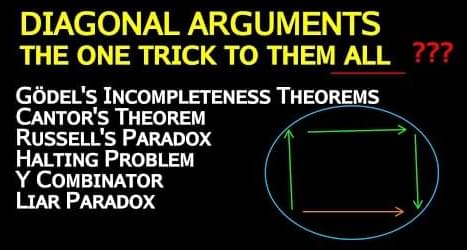
Diagonal Arguments are a powerful tool in maths, and appear in several different fundamental results, like Cantor’s original Diagonal argument proof (there exist uncountable sets, or “some infinities are bigger than other infinities”), Turing’s Halting Problem, Gödel’s incompleteness theorems, Russell’s Paradox, the Liar Paradox, and even the Y Combinator.
In this video, I try and motivate what a general diagonal argument looks like, from first principles. It should be accessible to anyone who’s comfortable with functions and sets.
Continue reading “What A General Diagonal Argument Looks Like (Category Theory)” »
Sep 6, 2023
PeLEDs offer to make encryption cheaper and more sustainable
Posted by Gemechu Taye in categories: computing, encryption, quantum physics, sustainability
Perovskite light-emitting diode is used as the light source for a quantum random number generator used in encryption.
Encryption plays an important role in protecting information in this digital era, and a random number generator plays a vital part in this by providing keys that are used to both encrypt and unlock the information at the receiving end.
Now, a team of researchers has made use of light-emitting diodes made from the crystal-like material perovskite to devise a new type of Quantum Random Number Generator (QRNG) that can be used for encryption but also for betting and computer simulations.
Sep 6, 2023
Apple bows to EU, iPhone 15 likely to have USB-C port
Posted by Gemechu Taye in categories: climatology, computing, law, mobile phones
EU law requires manufacturers to adopt Type-C chargers in phones, tablets, etc by December 2024.
Apple will switch out its proprietary Lightning charging port in iPhones to be compatible with a USB Type-C cable instead, reported.
The EU law says that by 2024-end, all mobile phones, tablets, and cameras sold in countries under the EU will have to be equipped with a USB-C charging port. From spring 2026, the obligation will extend to laptops as well. The law’s overall purpose is to cut down on environmental waste and save consumers an estimated $247 million per annum.
